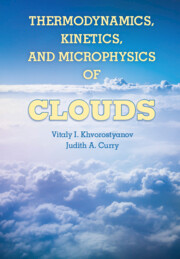Cloud and Precipitation Microphysics
This book focuses specifically on bin and bulk parameterizations for the prediction of cloud and precipitation at various scales - the cloud scale, mesoscale, synoptic scale, and the global climate scale. It provides a background to the fundamental principles of parameterization physics, including processes involved in the production of clouds, ice particles, liquid water, snow aggregate, graupel and hail. It presents full derivations of the parameterizations, allowing readers to build parameterization packages, with varying levels of complexity based on information in the book. Architectures for a range of dynamical models are given, in which parameterizations form a significant tool for investigating large non-linear numerical systems. Model codes are available online at www.cambridge.org/9780521883382. Written for researchers and advanced students of cloud and precipitation microphysics, this book is also a valuable reference for all atmospheric scientists involved in models of numerical weather prediction.
- Demonstrates the strengths and weaknesses of parameterizations for observationalists and modelers
- Provides the necessary building blocks for creating cloud and precipitational microphysical models and explains the theory behind the models
- Focuses specifically on bin and bulk parameterizations of cloud and precipitation prediction, unlike other books on the same subject
Product details
June 2011Paperback
9780521297592
408 pages
254 × 178 × 21 mm
0.71kg
Available
Table of Contents
- 1. Introduction
- 2. Foundations of microphysical parameterizations
- 3. Cloud droplet and cloud ice crystal nucleation
- 4. Saturation adjustment
- 5. Vapor diffusion growth of liquid water drops
- 6. Vapor diffusion growth of ice water crystals
- 7. Collection growth theory and parameterization
- 8. Drop breakup theory and parameterizations
- 9. Autoconversions and conversions
- 10. Hail growth theory and parameterization
- 11. Melting theory and parameterization
- 12. Microphysical parameterization problems and solutions
- 13. Model dynamics and finite differences
- Index.






